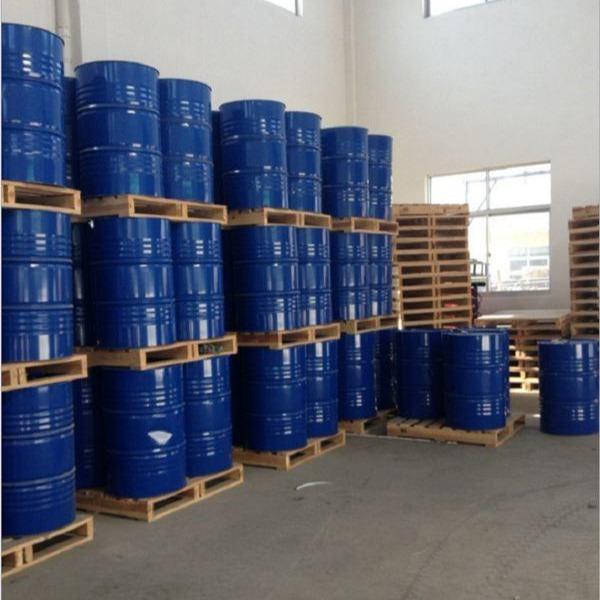-

P-XYLENE
Chemical properties: Colorless liquid, crystallizes at low temperature. Miscible with ethanol, ether, benzene, acetone, insoluble in water. Uses: 1. Used as raw material for the production of polyester fibers and resins, coatings, dyes and pesticides 2. Used as a standard substance and solvent for chromatographic analysis, and also used in organic synthesis for solvents for rubber and paints and additives for aviation fuel 3. Used to produce terephthalic acid, and then to produce polyester re...Read more -

Styrene
Gradually polymerizes and oxidizes in the air, and an inhibitor [hydroquinone or tert-butylcatechol (0.0002% to 0.002%) as a stabilizer to delay its polymerization] must be added before it can be stored. In industry, it is an important monomer for synthetic resins, ion exchange resins, and synthetic rubber. Styrene can also undergo addition reactions unique to olefins. In industry, styrene can be obtained by catalytic dehydrogenation of ethylbenzene. In the laboratory, it can be obtained by h...Read more -

Xylene
Xylene (dimethylbenzene) is a colorless, transparent, aromatic liquid. It is the product of two hydrogen atoms on the benzene ring being replaced by methyl atoms. Its boiling point is 137-140°C. Xylene is divided into three isomers: o-xylene, m-xylene, and p-xylene according to the positions of the two methyl atoms. In industry, xylene refers to a mixture of the above isomers and ethylbenzene. The grade is generally the superior grade and first grade of the Chemicalbook of 3°C and 5°C distill...Read more -

Toluene
Colorless clear liquid. Benzene-like odor. Strong refractive index. Miscible with ethanol, ether, acetone, chloroform, carbon disulfide and glacial acetic acid, very slightly soluble in water. Relative density 0.866. Freezing point -95℃. Boiling point 110.6℃. Refractive index 1.4967. Flash point (closed cup) 4.4℃. Flammable. Vapor can form explosive mixture with air, explosion limit 1.2%~7.0% (volume). Low toxicity, median lethal dose (rat, oral) 5000mg/kg. High concentration of gas is anesth...Read more -

Pure benzene
Benzene is the simplest aromatic hydrocarbon, with the molecular formula C6H6. In 1865, German chemist F.A. Kekulé proposed that benzene has a hexagonal structure with alternating single and double bonds, which has been used ever since. According to the hybrid orbital theory, the six π electrons in the benzene molecule are a whole, evenly distributed above and below the ring plane, and the structure of benzene can also be represented by a hexagon with a circle in it (see “Aromatic Hydro...Read more -

Tripropylene glycol
Tripropylene glycol is a colorless to light yellow liquid at room temperature and pressure. It has a certain solubility in water and is easily soluble in common organic solvents. It has the characteristics of low toxicity, low vapor pressure, and medium viscosity. It is a raw material that can be used in various radiation curing formulations. It usually undergoes an esterification reaction with acrylic acid to form tripropylene glycol diacrylate.Read more -

1,1′-Oxydi-2-propanol
Chemical properties: Dipropylene glycol is a colorless, slightly viscous liquid; boiling point 233℃; relative density 1.0252 (20℃); refractive index 1.439 (25℃); viscosity 107mPa.s (20℃); molecular weight 134.17; flash point 1Chemicalbook37℃. It is soluble in water and toluene, and can also undergo esterification, etherification, acetalization, halogenation and other reactions. Uses: Dipropylene glycol is mainly used as a solvent for cellulose acetate, cellulose nitrate, shellac varnish, and ...Read more -

Alkenes, C20-24 alpha-
English synonyms: Alkenes, C20-24alpha-; AlphaOlefinC2024; AlphaolefiChemicalbooknsC20-C24; Alkenes, C20-24α- CAS number: 93924-10-8 Molecular formula: C22H44 Molecular weight: 0Read more -

ETHANE
Ethane is the simplest hydrocarbon with a single carbon-carbon bond. It exists in natural gas (5% to 10%). It is a colorless, odorless, flammable gas that is soluble in benzene and ethanol (46 ml/100 ml at 4°C). Its vapor and air form an explosive mixture with an explosion limit of 3.0% to 12.5% (volume fraction).Read more -

Isobutylene
Isobutylene is also known as 2-methylpropylene. In industry, isobutylene is almost always obtained from refinery gas and cracking C4 fraction. The isobutylene content in refinery gas is generally 5% to 12%, and in cracking C4 fraction it is generally 20% to 30%.Read more -

1,3-Butadiene
1,3-Butadiene is an important petrochemical raw material and is widely used in synthetic rubber, synthetic resin and other fields. In the synthetic rubber industry, butadiene consumption accounts for 80% of the global butadiene consumption. Today, there are two main methods for the production of butadiene: ① butane butene dehydrogenation method; ② ethylene by-product extraction method. However, these two methods are heavily dependent on the use of petroleum resources. In the 1940s and 1950s, ...Read more -

PROPYLENE
Propylene is the second member of the olefin series, with a structural formula of CH2=CHCH3. It is an important organic industrial raw material after ethylene and benzene. It is generally separated from thermal cracking and catalytic cracking gases, and is also a by-product of light oil cracking to produce ethylene. The molecule contains unsaturated carbon-carbon double bonds, which can undergo addition reactions with hydrogen, halogens, hydrogen halides, etc., and can also undergo addition p...Read more





